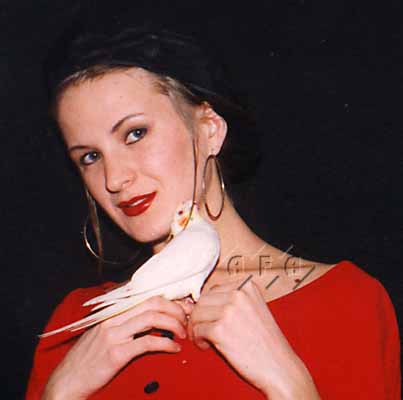|
Here are
some common methods of piercing and the pros & Cons
|
Warning
-
This is not intended as a medical site, and should not be used
as an instructional. It is only intended to give you an
overview of the options. |
|
Ice Cube & Needle
For some unknown reason, people still think this is how
you are suppose to pierce your ear. It doesn't work and never
did! At best it turns into a mess! Once you put the needle
in, you have to take it back out. This is where the problem
lies. As there is no skin tunnel formed yet, the earring you
then then try to put in has nothing to guide it through the hole
and tends to get lost in the lobe, doing a lot of internal
damage in the process. |
|
Piercing Gun
For earlobes, this works quite well, provided the person
holding the piercing gun has good aim! A small pointed stud is
shot into the earlobe. Fast, simple, and with few complications.
The only drawback is that studs aren't the best thing to wear
while healing as they trap moisture. |
|
Self Piercing with a
Piercing Stud
Basically the same as above except it is usually done at
home using a pointed stud, and backing your earlobe up with a
small sponge or piece of Styrofoam block. As with all self-piercings,
hygiene is very important. |
|
Sleepers
A sleeper is a small hoop that wants to close on it's own.
You place it on your earlobe and it slowly pushes it's way
through overnight. The plus is that a small hoop will allow air
to move around and the healing period will be shorter. The
minus is that you have to keep the area clean which is hard to
do while you are asleep. Also, funny things can happen when you
are asleep and you may find it moved before it worked it's way
through, and you now have a hole where you did not want it.
Another risk is that if you sleep on that side, the result may
be irregular or damaged. |
|
Tube and Follower
A hollow needle like those used for injections is used.
The earwire is feed into the hollow in the needle and is pushed
through the lobe. Clean, simple, neat, and almost pain free.
Usually, the "hard core" piercing stores use this
method. The trick is to leave without five other piercings
and tattoos in the process! |
As mentioned above, location is important. It is best to
try to pierce halfway between the cartilage and the edge of the lobe as
cartilage has it's own set of problems. Near-edge piercings often tear
out due to insufficient blood supply under the piercing, as well as the
poor mechanical position. Weight and allergic reactions are most
critical during the first year (Yes, year!) while the skin tunnel forms.
Once well healed, a proper piercing will be quite strong. Some worry
about heavy earrings and the hole stretching that can occur. A small
amount of stretching can actually be a benefit as it allows better air circulation
as well as reduces the injuries that may occur when putting new earrings
in. As with drinking, moderation is the key here, and any continued
downward progression through the lobe should be carefully monitored. |

